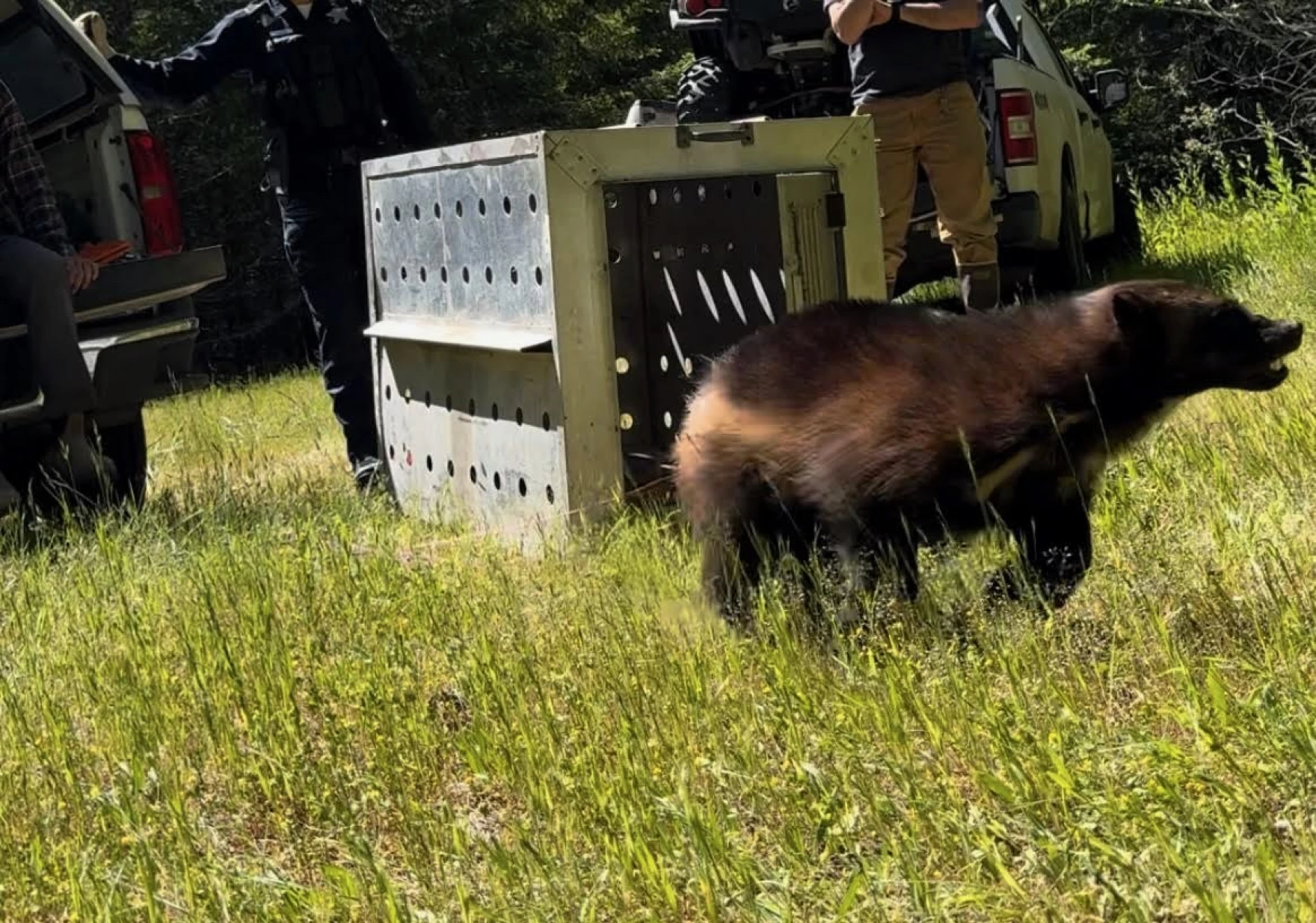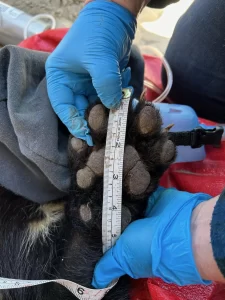
By KAREN RICHARDS/KLCC News
There was yet another wolverine encounter on the Oregon coast late last week – and this time visiting the beach where it was caught in a foot-hold trap.
Wolverines are rare in Oregon, but a year ago there were several sightings along the Columbia River, and this spring sightings along the central Oregon coast and then in Eugene.
A wolverine was confirmed to be in Florence on Wednesday and Thursday, May 29-30, according to the Oregon Department of Fish & Wildlife.
On Friday, May 31, the young male was caught in a padded foot-hold trap on a beach in Coos County, according to Beth Quillian, an ODFW spokeswoman. The traps are meant to protect threatened western snowy plovers.
Wildlife biologists acted quickly to immobilize, test, relocate and release the wolverine.
“At this point, we don’t have quite enough information to confirm whether or not it is the same individual that was seen earlier this year,” Quillian told KLCC. “But because we were able to take these samples, that is hopefully going to be very helpful.”
Quillian said the ODFW has hair samples from some earlier sightings, including a March visit by a wolverine in Newport.

Biologists also took measurements and photographs of the Coos Bay wolverine. Quillian said wolverines have unique black and white patterning on their chest called a blaze, which is useful in identifying individuals.
The wolverine had no significant injuries from the trap or subsequent handling, Quillian said, and it was moved to a more appropriate and safe location. As a federally threatened species under the Endangered Species Act, ODFW will not share specifics about where the wolverine was captured or released.
Quillian said it’s been an unprecedented year for wolverine sightings in Oregon. She said if people come across a wolverine, go ahead and take photos or video if it can be done without disturbing the animal. She emphasized not to chase it on foot or with a vehicle, but to observe from a distance and let the animal continue on its journey. Wolverines are listed as a threatened species in Oregon and no hunting or trapping of them is allowed.
Wolverines were thought to have been extirpated from Oregon by 1936, although reports were documented each decade from the 1960s to the 1990s, including locations in Linn, Harney, Wheeler, Deschutes and Grant counties. A 2010-2012 monitoring project confirmed three individual wolverines in northeastern Oregon, an area with no prior documentation of wolverines.
In 2023 there were several sightings of a wolverine along the Columbia River, in Damascus and in other parts of northwest Oregon. Before those sightings, the most recent observation of a wolverine in Oregon was in 2022 in Wallowa County. This March, April and May there were wolverine sightings in Nehalem, Tillamook, Newport, Florence, Eugene, and Canby.
ODFW biologists say the animal is likely dispersing to a new area where it can survive and hopefully reproduce. Wolverines can travel over 30 miles in a day.
- This story is from KLCC of Eugene, a news partner of YachatsNews and used with permission.



I didn’t know we still used leg traps. So I read a thing about the devices and learned that coyotes are very difficult to trap using other methods. I also learned that “padded” is not really padded. It’s more like ” less lethal” – able to do serious damage to the leg (as well as leave the animal open to attack from predators) but not meant to fracture or permanently cripple. Animals that have worse outcomes after stepping in leg traps include foxes, raccoons, and shore birds. Here’s an informative document by the American Veterinary Medical Association you can check out if you’d like to learn more:
https://www.avma.org/sites/default/files/resources/leghold_traps_bgnd.pdf
Maybe you missed this: “The traps are meant to protect threatened western snowy plovers.” Perhaps a lesser evil at play…
RIF